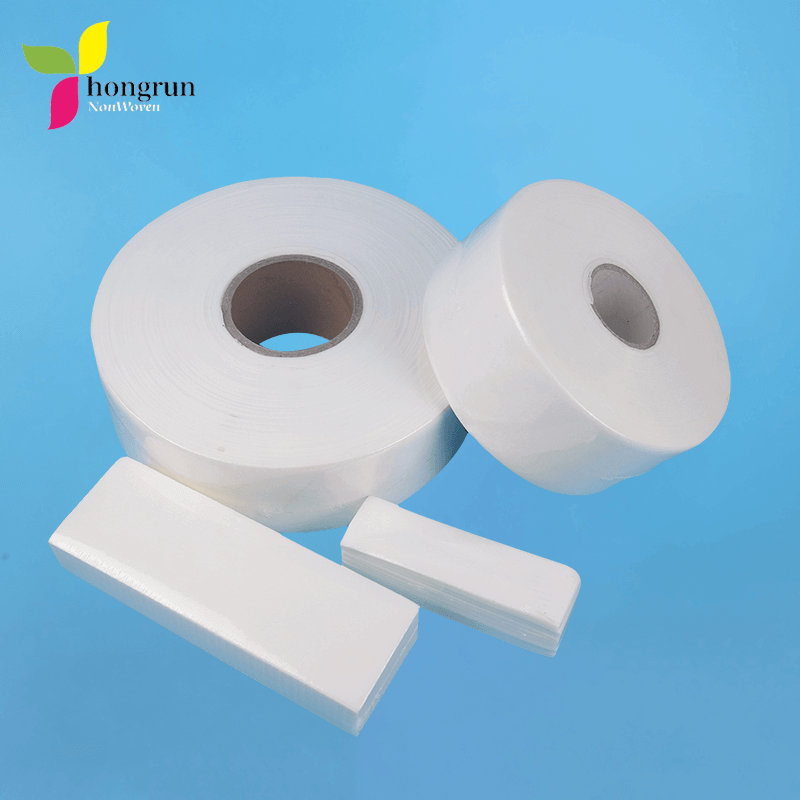HONGRUN
We are a factory and trading company of depilatory wax strip paper and other non-woven fabric products, professional in producing for more than 5 years.
Non-woven fabric is a kind of non-woven fabric, which is composed of oriented or random fibers, and has the appearance and certain properties of cloth. Although it is a cloth without being woven, it is called a non-woven fabric. Non-woven fabric is a new generation of environmentally friendly materials, which has the advantages of good strength, breathable and waterproof, environmental protection, flexibility, non-toxic and tasteless, and low price. The non-woven fabric is light in quality, environmentally friendly, and recyclable, and is recognized internationally as an environmentally friendly product that protects the earth's ecology.
Application of thin non-woven fabric production line for non-woven machinery and equipment
The technology of thin polyester spunbonded non-woven fabrics has been monopolized by foreign companies. As of 2000, there were only 6 production lines in the country. Foreign manufacturers have imposed technical blockades on my country. They only provide equipment but do not provide production technology software. Moreover, the price of imported equipment is high. The price of equipment for a production line is more than 100 million yuan, leading to domestic intentional investment. Investors in the project were discouraged. Beginning in 2000, the joint development of domestically produced polyester spunbond non-woven fabric production technology, the technology has now matured. According to reports, domestic polyester spunbond non-woven fabrics have surpassed the technical level of similar foreign products. The products are thinner and more breathable, and the production cost is only 1/4 of the price of similar foreign production lines, so it is more internationally competitive.
Application of non-woven equipment geotextile production line
Geosynthetics, this material that sounds very down-to-earth, does not have a gorgeous appearance, but is the technology that enables the smooth implementation of national infrastructure. The application of geosynthetics is the foundation of materials and cost savings for all geotechnical projects. With the rapid development of local people's livelihood and the awakening of environmental awareness on a global scale, the demand for geosynthetics has increased significantly, which has created good conditions for the development and application of environmentally friendly geosynthetics. Investment in domestic transportation, water conservancy and environmental engineering has particularly promoted the rapid development of geotechnical and construction textiles.
Despite the rapid development of domestic geosynthetics, there are still weaknesses and risks in the development of the industry, such as industry policy changes, weak standard system construction, and raw material price fluctuations. Among them, the most important thing to pay attention to is the problem of imperfect standards. For this reason, Professor Jin Xiangyu of Donghua University pointed out that since the establishment of my country's geosynthetic material standard system, although a more scientific, standardized and reasonable test standard system has been formed, there are still many shortcomings compared with advanced foreign standard systems. Coordinate the establishment of a complete national standard system, revise the system in a systematic and scientific way, standardize and standardize applicable conditions, refine the scope of application of test labels, and distinguish between different types of geosynthetic materials. There may be different operating procedures and experiments. As a result, all kinds of geosynthetics have clear standard references, so that geosynthetics can continue to develop.
The fiber types and functions of non-woven fabrics enable it to be used in various industries, such as aerospace, defense, automobiles, energy, industry, construction, and medical equipment. Typical applications include: delivering high-quality, multi-functional surface finishes for composite materials, passive fire protection, and high-temperature insulation, as well as providing solutions for low-temperature storage and power generation.
www.hzhrnonwoven.com

Copyright © 2019 Hangzhou Hongrun nonwovens Co., Ltd. | All Rights Reserved Technical Support:HWAQ Wholesale Depilatory Wax Strips Paper Suppliers